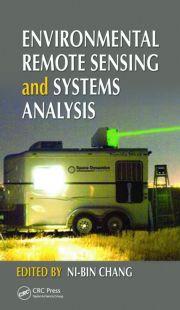Resources
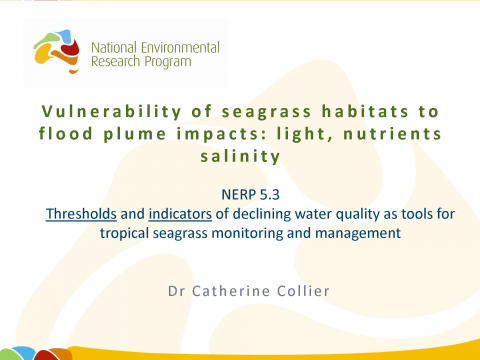 Catherine Collier (JCU); Thresholds and indicators of declining water quality as tools for tropical seagrass monitoring and management; Thursday 6th November.
Catherine Collier (JCU); Thresholds and indicators of declining water quality as tools for tropical seagrass monitoring and management; Thursday 6th November.
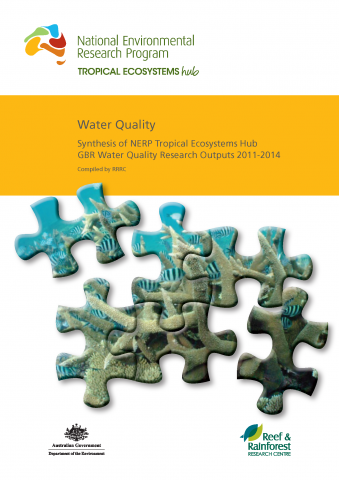 Devlin, M., Fabricius, K., Negri, A., Brodie, J., Waterhouse, J., Uthicke, S., Collier, C., Pressey, B., Augé, A., Reid, B., Woodberry, O., Zhao, J-x., Clarke, T., Pandolfi, J., Bennett, J. (2015) Water Quality - Synthesis of NERP Tropical Ecosystems Hub Water Quality Research Outputs 2011-2014.
Devlin, M., Fabricius, K., Negri, A., Brodie, J., Waterhouse, J., Uthicke, S., Collier, C., Pressey, B., Augé, A., Reid, B., Woodberry, O., Zhao, J-x., Clarke, T., Pandolfi, J., Bennett, J. (2015) Water Quality - Synthesis of NERP Tropical Ecosystems Hub Water Quality Research Outputs 2011-2014.
Devlin, M., Brodie, J., Wengner, A., da Silva, E., Alvarez-Romero., J.G., Waterhouse, J., McKenzie, L. (2012) Chronic and acute influences on the Great Barrier Reef: Putting extreme weather conditions in context. ICRS proceedings.
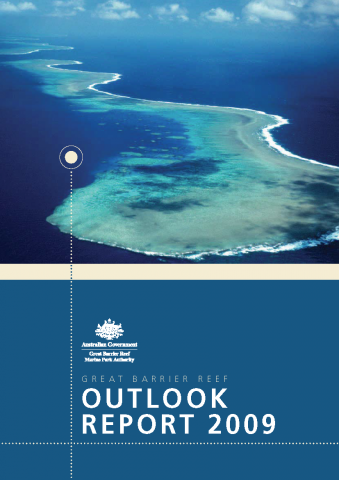 The Great Barrier Reef Outlook Report 2009 is a stock-take of the Great Barrier Reef, its management and its future.
The Great Barrier Reef Outlook Report 2009 is a stock-take of the Great Barrier Reef, its management and its future.
The aim of the Outlook Report is to provide information about:
- The condition of the ecosystem of the Great Barrier Reef Region (including the ecosystem outside the Region where it affects the Region);
• Social and economic factors influencing the Great Barrier Reef ecosystem;
• Management effectiveness of the Great Barrier Reef; and
• Risk-based assessment of the long-term outlook for the Region.
The Report underpins decision-making for the long term protection of the Great Barrier Reef. It was prepared by the GBRMPA based on the best available information and was independently peer reviewed. Many people contributed to the development of the Outlook Report including:
• Australian and Queensland Government agencies
• Leading Great Barrier Reef scientists and researchers
• Industry representatives
• Advisory committees
• Members of regional communities and the public.
The publication of an Outlook Report was a key recommendation of the review of the Great Barrier Reef Marine Park Act 1975. A report is to be prepared every five years and given to the Minister for Sustainability, Environment, Water, Population and Communities for tabling in both houses of the Australian Parliament.
The Great Barrier Reef Outlook Report 2009 is the first of these reports.
E.T. da Silva, M.J. Devlin, J. G. Alvarez-Romero, A. Wenger & L. I.W. McKinna, Integration of satellite imagery and in-situ data for the identification of surface water quality conditions in the Great Barrier Reef.
Devlin, M., Schroeder, T., McKinna, L., Brodie, J., Brando, V., Dekker, A. (2012) Monitoring and mapping of flood plumes in the Great Barrier Reef based on in-situ and remote sensing observations, in: Environmental Remote Sensing and System Analysis. CRC Press.
Related to Project 5.3
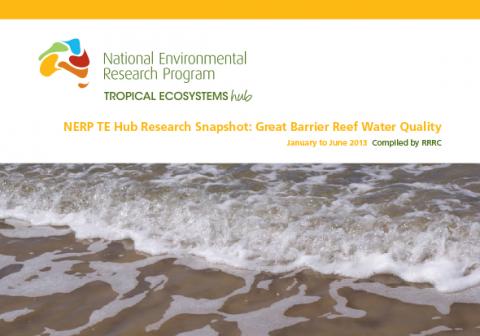 A snapshot of the research progress within the Great Barrier Reef Water Quality node for January to June 2013.
A snapshot of the research progress within the Great Barrier Reef Water Quality node for January to June 2013.
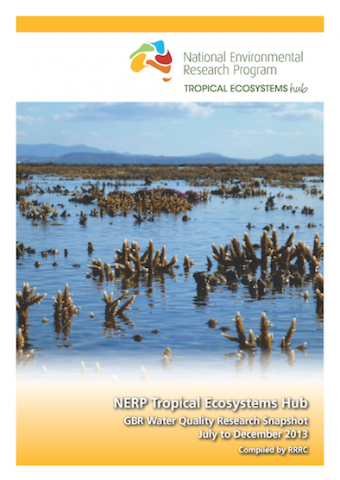 A snapshot of the research progress within the Great Barrier Reef Water Quality node for July to December 2013.
A snapshot of the research progress within the Great Barrier Reef Water Quality node for July to December 2013.

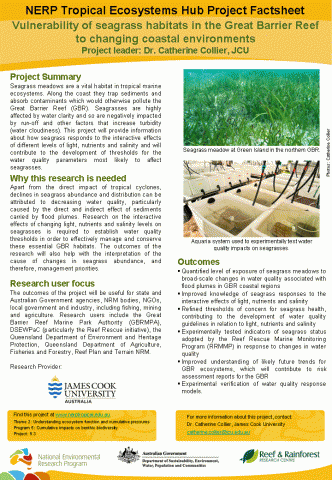 Seagrass meadows are a vital habitat in tropical marine ecosystems. Along the coast they trap sediments and absorb contaminants which would otherwise pollute the Great Barrier Reef (GBR). Seagrasses are highly affected by water clarity and so are negatively impacted by run-off and other factors that increase turbidity (water cloudiness). This project will provide information about how seagrass responds to the interactive effects of different levels of light, nutrients and salinity and will contribute to the development of thresholds for the water quality parameters most likely to affect seagrasses.
Seagrass meadows are a vital habitat in tropical marine ecosystems. Along the coast they trap sediments and absorb contaminants which would otherwise pollute the Great Barrier Reef (GBR). Seagrasses are highly affected by water clarity and so are negatively impacted by run-off and other factors that increase turbidity (water cloudiness). This project will provide information about how seagrass responds to the interactive effects of different levels of light, nutrients and salinity and will contribute to the development of thresholds for the water quality parameters most likely to affect seagrasses.

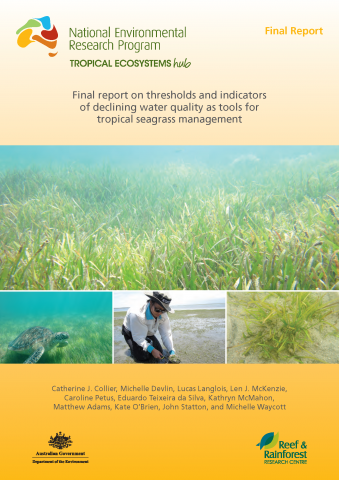 Collier, C., Devlin, M., Langlois, L., Petus, C., McKenzie, L. Petus, C, Texeira da Silva, E., McMahon, K, Adams, M, O’Brien, K., Statton, J., Waycott, M. (2014) Final report on thresholds and indicators of declining water quality as tools for tropical seagrass management.
Collier, C., Devlin, M., Langlois, L., Petus, C., McKenzie, L. Petus, C, Texeira da Silva, E., McMahon, K, Adams, M, O’Brien, K., Statton, J., Waycott, M. (2014) Final report on thresholds and indicators of declining water quality as tools for tropical seagrass management.
© JCU
